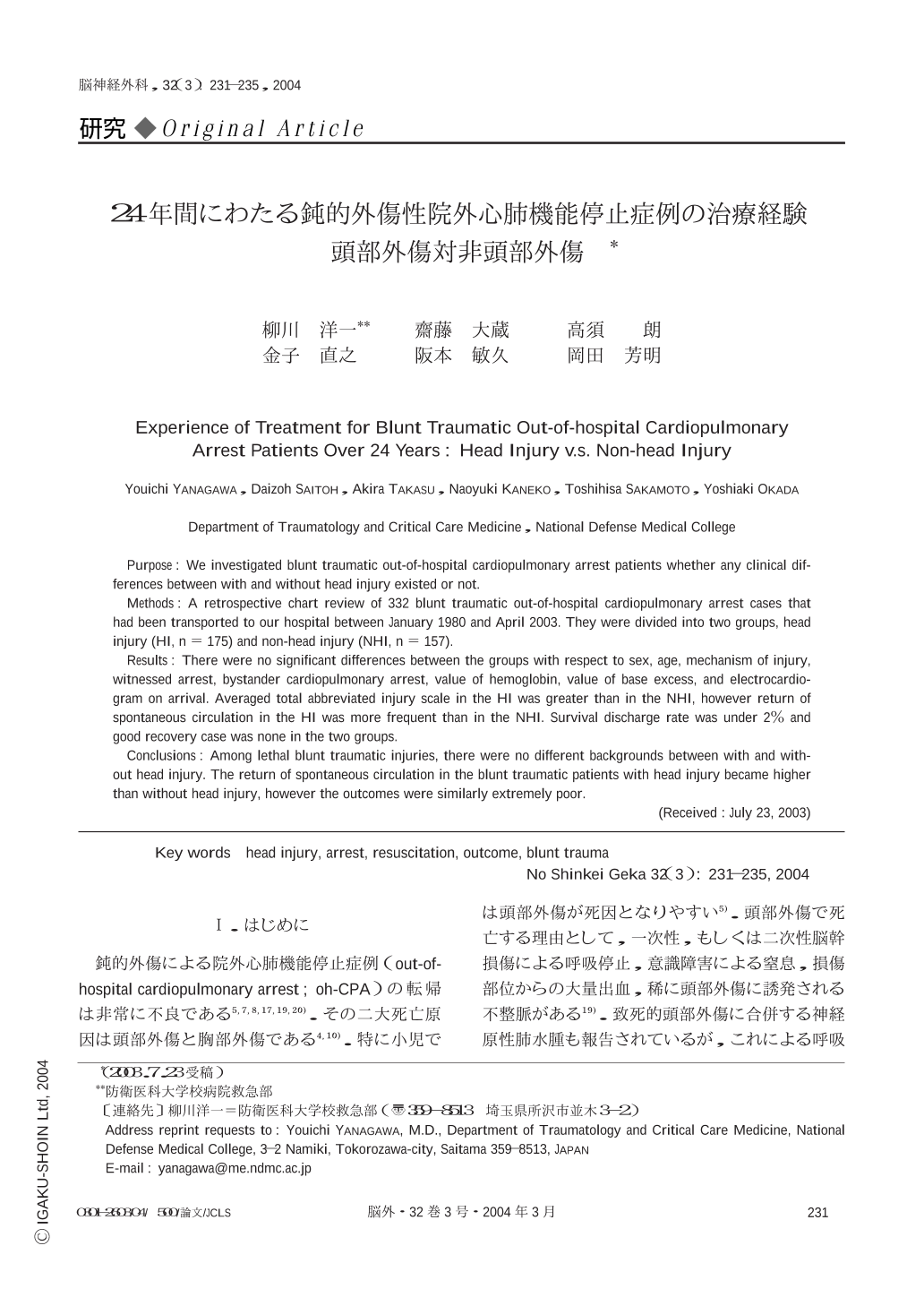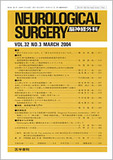Japanese
English
- 有料閲覧
- Abstract 文献概要
- 1ページ目 Look Inside
Ⅰ.はじめに
鈍的外傷による院外心肺機能停止症例(out-of-hospital cardiopulmonary arrest ; oh-CPA)の転帰は非常に不良である5,7,8,17,19,20).その二大死亡原因は頭部外傷と胸部外傷である4,10).特に小児では頭部外傷が死因となりやすい5).頭部外傷で死亡する理由として,一次性,もしくは二次性脳幹損傷による呼吸停止,意識障害による窒息,損傷部位からの大量出血,稀に頭部外傷に誘発される不整脈がある19).致死的頭部外傷に合併する神経原性肺水腫も報告されているが,これによる呼吸不全がどこまで死因に影響しているかは定かでない13).また,体幹部,四肢損傷も呼吸,循環に影響を与える場合,致命傷となり得る.しかし,頭部外傷を受傷した者と,頭部外傷を受傷していない者とで,転帰を含めた臨床像に差があるのか否かも現時点では明らかにされていない.
防衛医科大学校病院救急部では,開設以来20年以上にわたり,鈍的外傷性oh-CPA症例に対しても,積極的な心肺蘇生術(cardiopulmonary resuscitation ; CPR)を施行し,また,受傷機転や病院前救護の情報も収集してきた.そこで,それらの症例に関して,頭部外傷の有無が臨床像の違いに現れるか後視的に検討を行ったので,その結果を報告する.
Purpose : We investigated blunt traumatic out-of-hospital cardiopulmonary arrest patients whether any clinical differences between with and without head injury existed or not.
Methods : A retrospective chart review of 332 blunt traumatic out-of-hospital cardiopulmonary arrest cases that had been transported to our hospital between January 1980 and April 2003. They were divided into two groups,head injury (HI,n=175) and non-head injury (NHI,n=157).
Results : There were no significant differences between the groups with respect to sex,age,mechanism of injury,witnessed arrest,bystander cardiopulmonary arrest,value of hemoglobin,value of base excess,and electrocardiogram on arrival. Averaged total abbreviated injury scale in the HI was greater than in the NHI,however return of spontaneous circulation in the HI was more frequent than in the NHI. Survival discharge rate was under 2% and good recovery case was none in the two groups.
Conclusions : Among lethal blunt traumatic injuries,there were no different backgrounds between with and without head injury. The return of spontaneous circulation in the blunt traumatic patients with head injury became higher than without head injury,however the outcomes were similarly extremely poor.

Copyright © 2004, Igaku-Shoin Ltd. All rights reserved.


